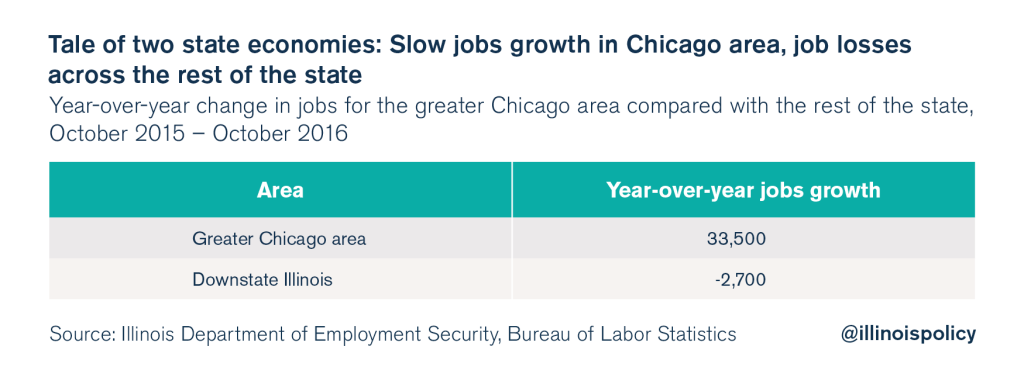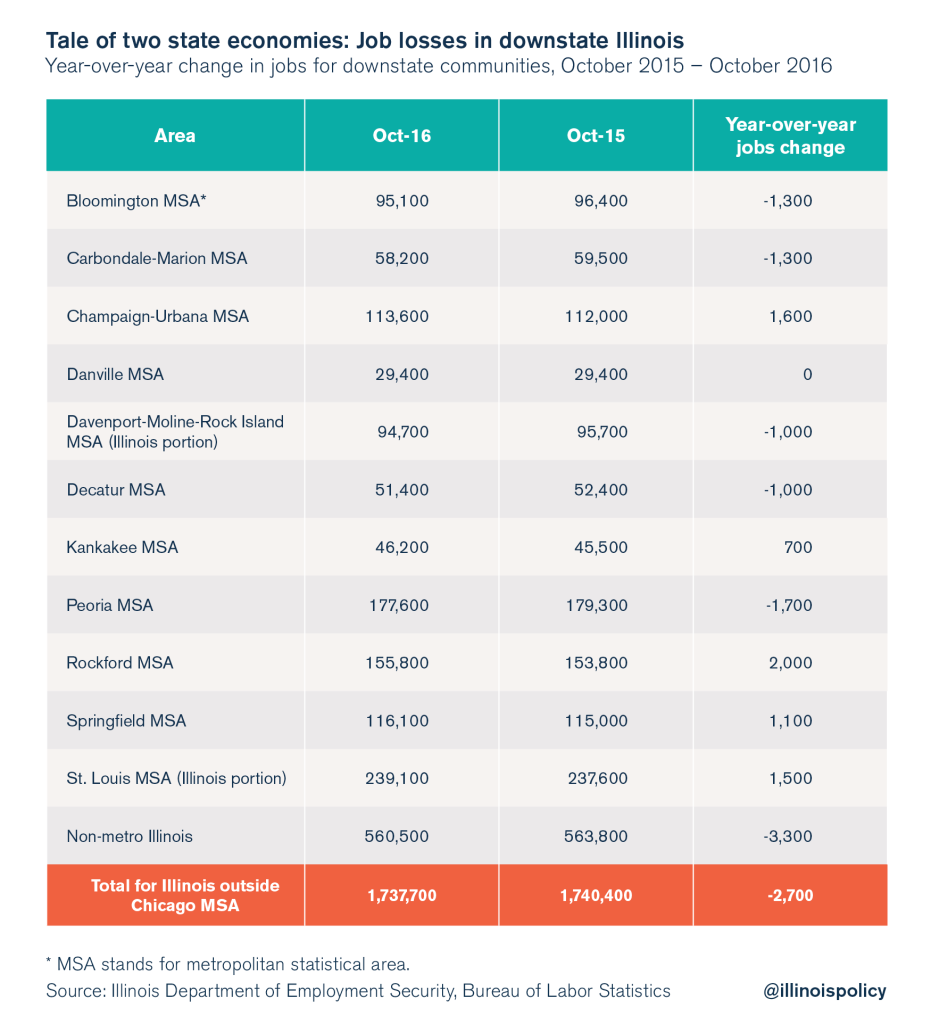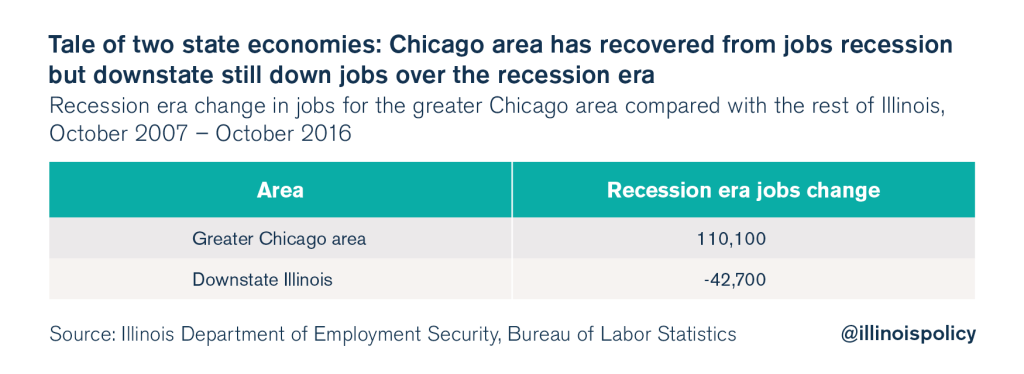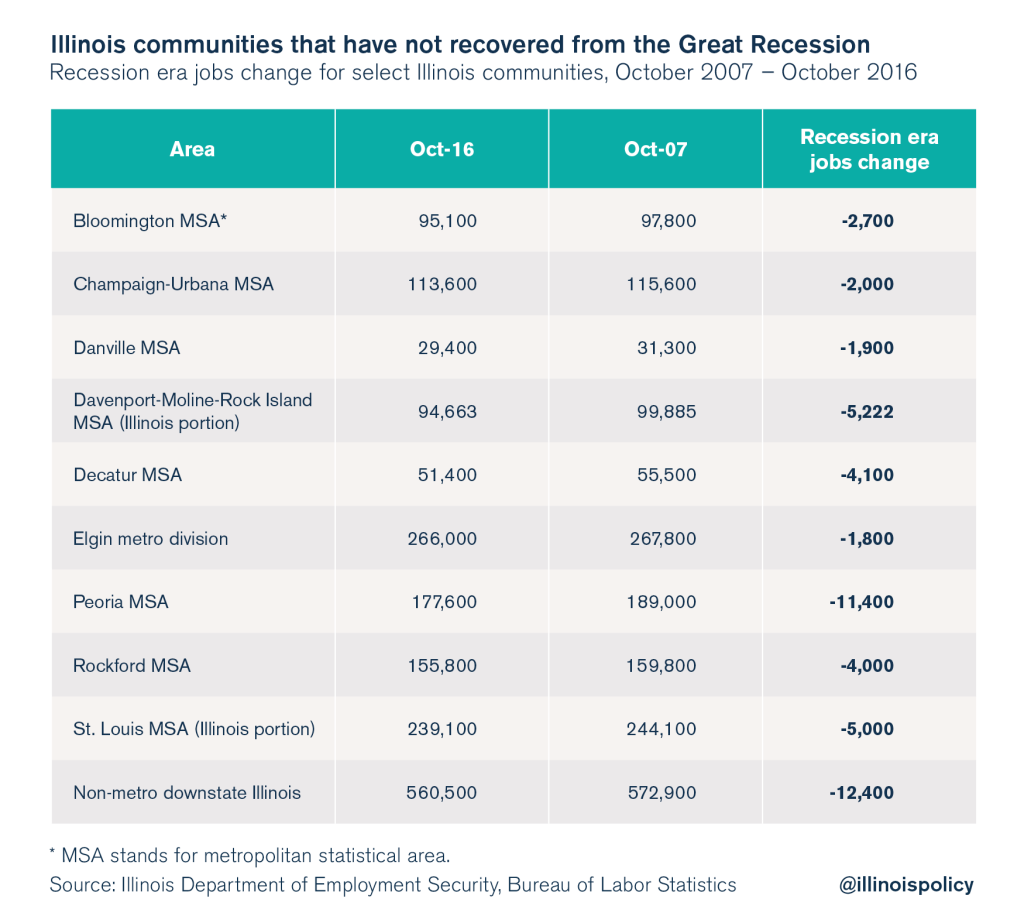Chicago area sees slow jobs growth, downstate suffers continued job losses
Metropolitan jobs data shows that from October 2015 – October 2016 the greater Chicago area is up +33,500 jobs while the rest of the state is down -2,700 jobs. Measured since before the Great Recession, from October 2007 – October 2016, the greater Chicago area is up 110,100 jobs while the rest of the state is down -42,700 jobs.
Illinois’ October metro jobs report shows a continued divergence between the greater Chicago area, where service-sector jobs dominate, and downstate communities that rely more on production-sector jobs. Over the past year Illinois added 30,800 jobs, according to metro jobs data from the Illinois Department of Employment Security. These modest jobs gains have been concentrated in the northeast portion of the state, with the greater Chicago area adding 33,500 jobs and downstate communities losing 2,700 jobs; adding up to the state’s net addition of 30,800 jobs.

The greater Chicago area showed relatively weak job growth over the year. The addition of 33,500 jobs is equal to an annual growth rate of 0.8 percent. However, some job growth is better than none, which is especially evident in comparing the greater Chicago area with downstate communities. The Chicago-Naperville-Arlington Heights metro division added 23,800 jobs over the year; the Elgin metro division added 5,100; and the Illinois portion of the Lake-Kenosha metro division added 4,600.

Downstate communities have borne the brunt of economic suffering in the Land of Lincoln. On top of the state’s notorious anti-industrial tax and regulatory policies, global competition and weak demand for products from companies like Caterpillar have left downstate communities struggling. Illinois’ slow economic growth and unattractive business climate are thwarting the basic human need for productive employment in many downstate communities. Half of downstate communities are down jobs over the past year.

Looking over the Great Recession era, the state of Illinois is up 67,400 jobs compared to before the recession. However, the division between the greater Chicago area and the rest of Illinois is stark. Since October 2007, the greater Chicago area is up 110,000 jobs; while the rest of the state is still down 43,000 jobs.

Illinois was one of the last states to recover the total number of jobs it lost during the Great Recession, and the Land of Lincoln still has fewer jobs than in 2000. The metro jobs data shows that for a large swath of the state there has not yet been a recovery from the Great Recession. Nine Illinois metro areas along with the combined non-metro areas of downstate Illinois all still have fewer jobs than they did in October 2007, before the Great Recession.

Industrial and production communities in downstate Illinois are suffering while the service-sector job engine of Chicago is staying afloat, though not thriving. Global changes are exacerbating some of the advantages for larger cities and some of the disadvantages for more rural communities like downstate Illinois. But Illinois’ regional problems are also driven by policy imbalances emanating from Springfield. Issues like high property taxes and high workers’ compensation costs have a much more painful effect on the production sector economy like manufacturing than on service sector jobs like business services.
Bad policies that have been coming from Springfield for decades hold back economic growth for the entire state, driving communities to despair. The result of Illinois’ anti-jobs environment is to thwart good job opportunities and accelerate out-migration. Chicago-based Democratic legislative leaders have been writing industrial policy for Illinois but have ignored the devastating fact of whole cities with shrinking jobs bases. The pain delivered from Springfield lawmakers can only be undone by policy changes and robust economic growth.
